Railroads and IoT – Part 2
Lamont Lockwood, March 2023. Copyright © 2023 Integration Expert. All rights reserved. More information: info@integrationexpert.com
What did I miss in Part 1?
The Ohio railway tragedy of 2023 has been traced to a serious mechanical problem in one of the railcars that has been recognized for over 100 years. 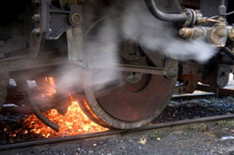 Railroads have many accidents from derailed cars, made more expensive and hazardous by carrying flammable and toxic cargoes. We related a personal story from decades ago about a resistance to instrumentation—specifically overheated axle bearings causing derailments—on railcars.
Railroads have many accidents from derailed cars, made more expensive and hazardous by carrying flammable and toxic cargoes. We related a personal story from decades ago about a resistance to instrumentation—specifically overheated axle bearings causing derailments—on railcars.
In testimony to Congress in March 2023, Norfolk Southern’s CEO made minimal suggestions: minor changes to a 70-year-old trackside monitoring scheme called hot box detectors.
We respectfully disagree. The potential liability of accidents in populated downtown areas is astronomical, while railcar-level monitoring in 2023 is less expensive, more cost-effective, more comprehensive, and more scalable than ever before. The WorldWideWeb + satellite infrastructure provides real-time access no matter where the train is.
Political action has been lacking or legislation derailed after serious accidents
US Railroads sometimes seem like they are still in the Gilded Age, satisfied to allow other, less-efficient technologies to peel off their high-value businesses. In other countries, trains play a critical role in supporting national priorities such as moving war materiel in Ukraine or large numbers of passengers sharing the rails with freight.
What would be the return on investment of a more-trusted railway system?
- Better intermodal transport to decrease the impact and expense of long-haul trucks
- Laser-like focus on revenue from railcars rather than revenue from trains
- Clearing the 2021 bottleneck of container ships in US ports
- Greater flexibility to match transportation mode with customer expectations
- Community health and safety
- Dependable rail delivery as the first step to more major innovations
“Too Big or Too Hard or Too Hostile” – Managing the Change
There are 290 million road vehicles and 250,000 airplanes in the US with instrumentation. Trains.com estimates $4 to 500 per year per car to put the infrastructure in place. A workable goal would be 80% compliance within 5 years once the technology is proven.
Government already sets standards for railcars and locomotives. Many railroad issues are much more controllable to address than self-driving trucks, but self-driving technology is still leaping ahead, making trucks more and more competitive with trains for high-value goods.
The Federal Government should set up a Railcar Monitoring Command (RMCom) shared by the Commerce Department, DARPA, and the Federal Railroad Administration (FRA/DoT), a high-tech, FAA-like national organization to install, monitor, and manage this instrumentation. RMCom can add pre-built harnesses to 1.6 million railcars cost-effectively during routine maintenance just like aircraft. There will be numerous uses and requirements for this information, so a single, secure, real-time clearinghouse is critical with flexible alarms for railroad operators. Like the Federal Reserve for banks, a railroad surcharge will pay for RMCom.
RMCom will not route railroads. Railroads already have million-dollar electronic wall displays backed by millions of dollars of computer systems. RMCom can exchange metric and alert information with railroads on timetables, train composition, hazardous materials, schedules, and railcar inventories.
Apply today’s proven Internet of Things technology to railcars
SCADA practice/technology has become the Internet of Things (IoT), the idea in the 2010’s that many complex systems could be 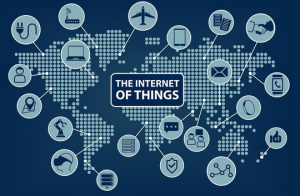 instrumented and hazards could be controlled through a combination of advanced sensors, logic or artificial intelligence, and even video/audio/motion signal processing.
instrumented and hazards could be controlled through a combination of advanced sensors, logic or artificial intelligence, and even video/audio/motion signal processing.
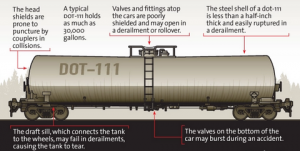 Many organizations are working on sensors; we recommend platforms to deploy modular sensor suites on individual railcars, particularly railcars not optimal for hazardous cargoes. It’s much better than anonymous trackside monitors.
Many organizations are working on sensors; we recommend platforms to deploy modular sensor suites on individual railcars, particularly railcars not optimal for hazardous cargoes. It’s much better than anonymous trackside monitors.
IoT represents a massive operations Renaissance of technology making the ability to deploy, gather, process, transmit, and feedback real-time information very straightforward. These COTS (Commercial Off-the-Shelf) modular components may accomplish a primary goal of mitigating several top railcar issues.
- Dozens of new sensor devices are available to measure even tiny details, including sensors specific to railcars that carry hazardous cargoes.
- Sensitive video and audio devices can detect patterns such as changes in the audio signature of moving equipment to indicate lubrication or wear threats.
- Accelerometers now in our smartwatches can determine dangerous car motion or oscillation. AI pattern analysis can detect both car problems and track problems.
- Signal processing from multiple moving railcars can result in dynamic analyses of both railcars and track conditions.
- GPS is available to pinpoint exact locations, even in motion
- Small, modular computers like RaspberryPi can locally store and process rivers of data, tie metrics to each railcar, and securely communicate with centralized monitoring and management through the WorldWideWeb and/or satellites. Fiber is along many railroad rights-of-way, so railcars may never be out of range.
What ensures that engineering will mitigate the cost and risk?
When trains carried non-hazardous cargoes like coal or grain or lumber or iron ore—and cities and towns were small—the consequences of a spill were manageable. A spill of today’s hazardous petroleum products, toxins, explosives (e.g. ammonium nitrate), or acids (e.g. chlorine gas, nitric acid) as trains pass through the center of heavily populated cities could be catastrophic and extremely expensive. It is worth significant expense if even one serious accident is avoided.
What can mitigate preventable accident factors while propelling the US railroad system into the 21st century? 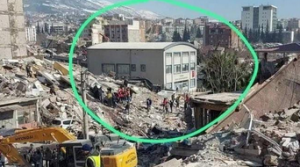 Evolution has had minimal effect on rail management decisions in past decades, so a stronger Federal response, in conjunction with crowdsourced ideas and prototypes from universities, other countries’ rail think tanks, and other industries’ experience with IoT can be applied. A centralized command, low-impact implementation, and a decrease in systematic accidents could make this a shining star in the US government push for modernized infrastructure. Railroads may see some advantage in decreased defensive lobbyist cost and insurance premiums.
Evolution has had minimal effect on rail management decisions in past decades, so a stronger Federal response, in conjunction with crowdsourced ideas and prototypes from universities, other countries’ rail think tanks, and other industries’ experience with IoT can be applied. A centralized command, low-impact implementation, and a decrease in systematic accidents could make this a shining star in the US government push for modernized infrastructure. Railroads may see some advantage in decreased defensive lobbyist cost and insurance premiums.
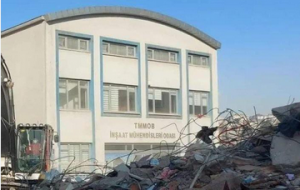 Can engineering make a difference in the severity of disasters? Look no farther than the severe 2023 Turkish earthquake, where one building stands virtually undamaged while surrounded by destruction: the Civil Engineers Union building.
Can engineering make a difference in the severity of disasters? Look no farther than the severe 2023 Turkish earthquake, where one building stands virtually undamaged while surrounded by destruction: the Civil Engineers Union building.
Now, let’s apply similar engineering skills to trains to make them safer, more dependable, and more profitable for all!
Pictures: Courtesy of TMMOB